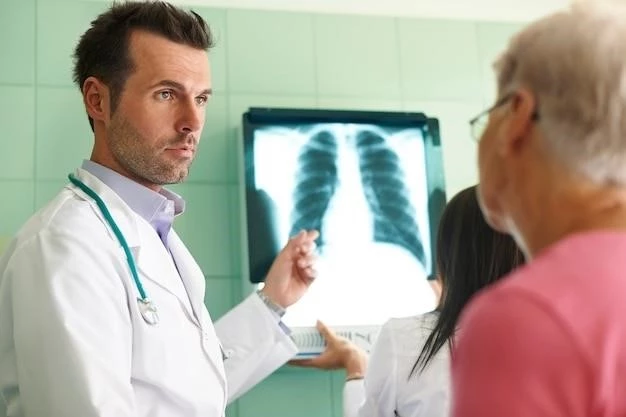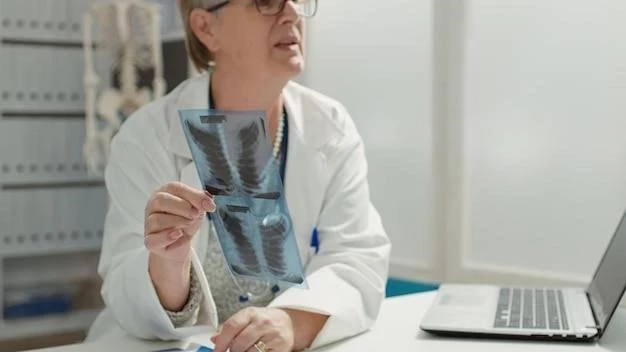Introduction
Tetraamelia pulmonary hypoplasia refers to a rare malformation characterized by limb absence and underdeveloped lungs. It is often inherited in an autosomal recessive manner.
Overview of Tetraamelia Pulmonary Hypoplasia
Tetraamelia pulmonary hypoplasia is a rare condition characterized by the absence of all four limbs and underdeveloped lungs. It is often a component of the more general tetra-amelia syndrome where individuals are born without limbs. This syndrome can be associated with various other malformations affecting different parts of the body. Despite the severe nature of the condition, management may be guided by the presence and severity of associated anomalies. Research on tetra-amelia with pulmonary hypoplasia has shown phenotypic heterogeneity with varying limb anomalies and lung underdevelopment. Prognosis is generally poor, with most infants being stillborn or surviving for a short period after birth.
Clinical Features
Individuals with tetraamelia pulmonary hypoplasia typically present with the complete absence of all four limbs and underdeveloped lungs. This rare condition may also be associated with additional anomalies affecting various body systems.
Characteristics of Tetra-Amelia Syndrome
Tetra-amelia syndrome, also known as TETAMS, is an extremely rare disorder characterized by the absence of all four limbs. This condition can also lead to severe malformations affecting various other parts of the body. In most cases, infants with this syndrome are stillborn or have a limited lifespan after birth. The presence and severity of associated anomalies play a significant role in the management and prognosis of individuals with tetra-amelia syndrome.
Association with Pulmonary Hypoplasia
Tetraamelia syndrome, characterized by the absence of all four limbs, may be associated with pulmonary hypoplasia, a condition where the lungs are underdeveloped. Research shows that this rare syndrome can present with phenotypic heterogeneity, including varying limb anomalies and abnormal lung development. The presence of pulmonary hypoplasia contributes to the complexity and severity of the condition, impacting the overall management and prognosis of individuals affected by tetraamelia with associated pulmonary underdevelopment.
Diagnosis
Diagnosing tetraamelia pulmonary hypoplasia involves a thorough clinical evaluation, imaging studies to assess limb and lung development, genetic testing to identify associated abnormalities, and consultation with specialists for comprehensive management.
Diagnostic Methods for Tetraamelia Pulmonary Hypoplasia
Diagnosing tetraamelia pulmonary hypoplasia involves a comprehensive approach, including physical examination, imaging studies like X-rays and ultrasounds to assess limb and lung abnormalities, genetic testing to identify potential mutations, and consultation with medical geneticists and pediatric specialists. Additionally, other diagnostic tests may be required to evaluate associated anomalies.
Causes
Tetraamelia pulmonary hypoplasia is typically caused by genetic factors, often inherited in an autosomal recessive pattern. This rare condition is associated with the absence of limbs and underdeveloped lungs.
Genetic Factors
Tetraamelia pulmonary hypoplasia is primarily caused by genetic factors, often inherited in an autosomal recessive pattern. The absence of all four limbs and underdeveloped lungs are key characteristics of this rare condition attributed to genetic abnormalities.
Management
The management of tetraamelia pulmonary hypoplasia involves a multidisciplinary approach, focusing on addressing associated anomalies, supportive care, and potential surgical interventions to improve quality of life.
Treatment Approaches for Tetra-Amelia Pulmonary Hypoplasia
The treatment of tetra-amelia pulmonary hypoplasia involves a multidisciplinary approach, focusing on addressing associated anomalies, providing supportive care, and potentially considering surgical interventions to improve the quality of life for affected individuals. Due to the complexity and severity of the condition, personalized care plans may be necessary to manage the diverse manifestations associated with this rare syndrome. Research continues to explore innovative strategies to enhance the management and outcomes of individuals with tetra-amelia pulmonary hypoplasia.
Prognosis
The outlook for individuals with tetraamelia pulmonary hypoplasia is generally poor due to the severity of the condition. Most affected infants are stillborn or have a limited lifespan after birth.
Outlook for Individuals with Tetraamelia Pulmonary Hypoplasia
The prognosis for individuals with tetraamelia pulmonary hypoplasia is generally poor, with most affected infants being stillborn or surviving for only a short period after birth. The severity and complexity of associated anomalies play a significant role in determining the overall outlook for individuals with this condition.

Research and Studies
Studies on tetra-amelia with pulmonary hypoplasia aim to understand the genetic and phenotypic heterogeneity of this rare condition, exploring potential treatment strategies and improving diagnostic approaches for better management.
Current Studies on Tetra-Amelia with Pulmonary Hypoplasia
Research on tetra-amelia with pulmonary hypoplasia aims to explore the genetic and phenotypic heterogeneity of this rare condition. Studies investigate potential treatment strategies, diagnostic advancements, and ways to enhance the management and outcomes for individuals with tetra-amelia and associated pulmonary underdevelopment.
Case Reports
Case reports on tetraamelia pulmonary hypoplasia document rare instances of individuals with complete limb absence and underdeveloped lungs, shedding light on the clinical complexities and management challenges faced in such cases.
Reported Cases of Tetraamelia with Pulmonary Hypoplasia
Research and case reports on tetraamelia with pulmonary hypoplasia showcase the rare instances of individuals born with complete limb absence and underdeveloped lungs. These documented cases provide insights into the clinical manifestations and management challenges associated with this complex condition.

Complications
Tetraamelia pulmonary hypoplasia may lead to various potential complications, considering the severe malformations and underdeveloped lungs often associated with the condition.
Potential Complications Associated with Tetraamelia Pulmonary Hypoplasia
Tetraamelia pulmonary hypoplasia may lead to various potential complications, considering the severity of limb absence and underdeveloped lungs. The presence of associated anomalies can further contribute to the complexity of the condition, posing challenges in management and care.
Prevention
Preventing tetraamelia pulmonary hypoplasia involves genetic counseling for at-risk couples and early detection through prenatal screenings to aid in appropriate management strategies.
Strategies for Preventing Tetra-Amelia Pulmonary Hypoplasia
Preventing tetra-amelia pulmonary hypoplasia involves genetic counseling for at-risk couples, early prenatal screenings to identify potential anomalies, and exploring possible interventions to improve outcomes and quality of life for affected individuals.
In conclusion, tetraamelia pulmonary hypoplasia is a rare and severe condition characterized by the absence of all four limbs and underdeveloped lungs. This complex syndrome presents various challenges in management and care, often resulting in poor outcomes for affected individuals. Ongoing research and studies aim to deepen our understanding of the genetic and phenotypic aspects of this condition, with a focus on improving diagnostic approaches and exploring potential treatment strategies. Despite the difficulties associated with tetraamelia with pulmonary underdevelopment, advancements in medical interventions and multidisciplinary care may provide hope for enhanced quality of life for affected individuals in the future.
